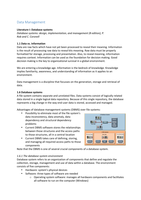Samenvatting
Business Intelligence & Data Management - Literature summary
Summary of all literature (selected articles and chapters from the book) for the course Business Intelligence & Data Management. Mandatory course for the master Information Management.
[Meer zien]




